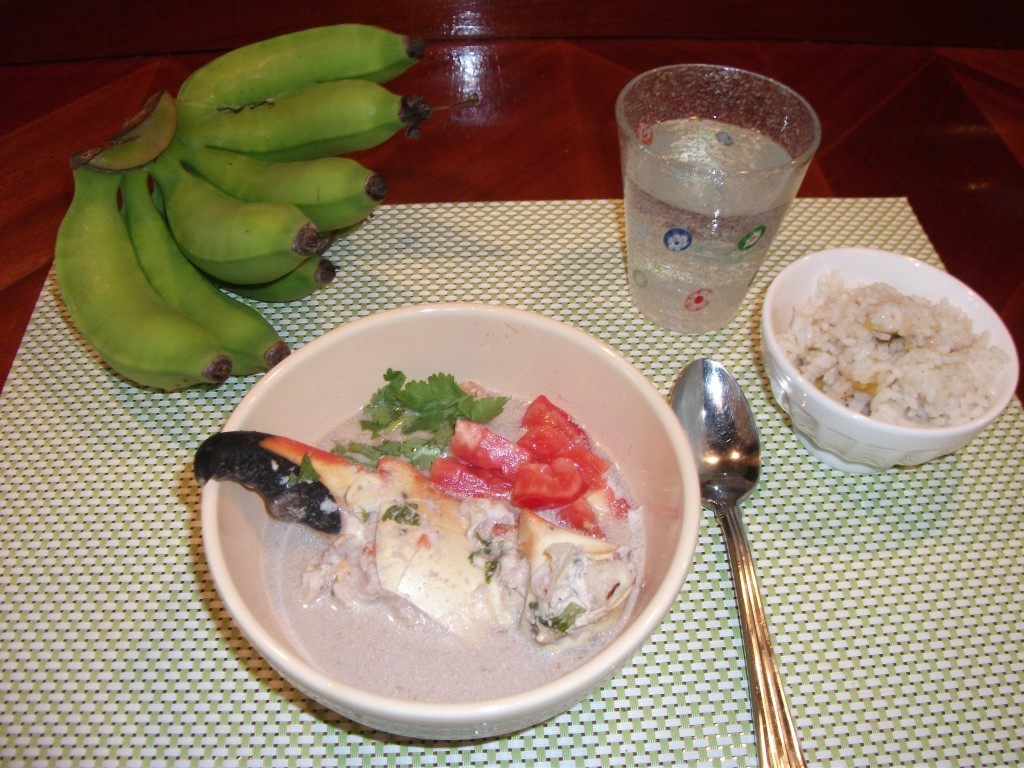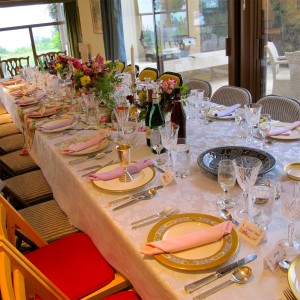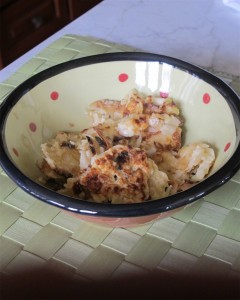A few months ago I had the pleasure of traveling to Livingston, Guatemala. Situated on the Caribbean coast, Livingston is a laid-back little place that seems to be worlds apart from the rest of Guatemala. It has a large Garafuna population (descendants of Carib, Arawak and West African people) and is a jumping off place for tourists to begin their Guatemalan travels. As usual, when we arrived by boat and walked uphill to town I began my search for the best local cuisine, and I was lucky enough to stumble upon a hole-in-the-wall place that serves Tapado. This luscious fish stew features ingredients found in nearly every marketplace in Guatemala – bright green bananas, fresh coconut and an array of seafood. As I dove into the steaming bowl of stew placed in front of me, I realized it contained a whole small fish – skin, bones and all. Despite the fact that it was a very messy proposition – I was in heaven.
When I returned to our home in Belize, I couldn’t get Tapado out of my mind. I remembered that our Belizean friend’s mother was from Guatemala, and I thought I’d ask him if he was familiar with the dish. Initially I wasn’t terribly optimistic. Jose is a serious, quiet man whose capable hands can fix any and every house-related issue that arises. I didn’t know much about his culinary interests. I was delighted to find out that his mother used to make huge vats of Tapado for Jose and his thirteen brothers and sisters. Even better – Jose offered to teach me how to make it himself!
I learned a lot from Jose that day in his tiny kitchen. For instance green unripe bananas, when simmered, taste much like cooked potatoes. Jose also introduced me to annatto, a reddish vegetable dye that is used all over Belize and Central America to color the food. I’ve since made Tapado here in the states, forgoing the whole fish and substituting fresh snapper or any other white fish. The version I make features large whole crab legs – so you have to dig the meat out of the shells. Every time I make it for friends and family they tell me that they feel transported to another world. As I look around the table with a huge pot of Tapado as the center piece I think of Jose and his mother, dolling out this heavenly fish stew to their huge family.
Tapado
Serves 8-10
Ingredients
- 10 very green (unripe) bananas
- 1 lb large crab legs, smash shell slightly with a hammer but leave meat inside
- 1 can coconut milk (14 oz)
- 3 cups water
- 2 large tomatoes, diced (1 for stew and 1 for garnish)
- 1 Tbsp salt (plus more to taste)
- 1 tsp ground black pepper
- ½ bunch chopped cilantro (1/3 cup for stew – reserve some leaves for garnish)
- 4 cloves garlic, peeled and coarsely chopped
- 1 lb snapper or whitefish fillet, cut into 1 ½ inch pieces
- 2 limes, juiced, plus 1 lime for garnish
- 1 lb shrimp, shelled and cleaned
Instructions
Have a large dutch oven or sauce pan ready (at least 3 quarts).
Peel and slice bananas into ½ inch pieces and soak for 3 minutes in water, drain. Add to dutch oven.
Add the remaining ingredients except snapper, shrimp and lime and cover. Bring to a boil over medium high for 20 minutes. Check occasionally and skim off the foamy matter than comes to the top as needed. Uncover, stir and add fish, shrimp and lime. Continue to cook for 5 minutes, then remove from heat.
Scoop some of the Tapado into a bowl. Garnish soup with chopped tomatoes and fresh chopped cilantro with a wedge of fresh lime. I like to serve this with arroz con platanos (authentic rice with plantains) – check out next week’s post for details! This soup reheats very nicely for future meals.












